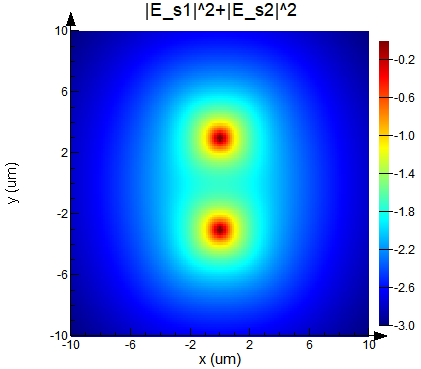-
-
March 12, 2021 at 4:34 pm
Shin-Sung Kim
Ansys EmployeeThis post discusses how to simulate spatial incoherence directly (or using the Ergodic principle). A more efficient method of creating incoherent results from coherent results is also discussed.n Problems with direct simulation of incoherencenA spatially incoherent source could be, for example, an ensemble of dipole emitters spread over a given volume. Each dipole is independent of its neighbors and emits radiation with a random phase that varies on a time scale on the order of τc. At any given instant, the relative phases of all the dipoles are fixed. However, on a time scale of τc, the relative phases of the dipoles change in a completely random fashion. The direct simulation of spatial incoherence requires simulations for very long periods of time or a large amount of ensemble averaging (with one simulation per ensemble). Therefore, it is not practical to simulate spatial incoherence directly in most cases.nErgodic principlenSpatial incoherence can be simulated using the ergodic principle of averaging results from multiple ensembles of dipoles.n
Problems with direct simulation of incoherencenA spatially incoherent source could be, for example, an ensemble of dipole emitters spread over a given volume. Each dipole is independent of its neighbors and emits radiation with a random phase that varies on a time scale on the order of τc. At any given instant, the relative phases of all the dipoles are fixed. However, on a time scale of τc, the relative phases of the dipoles change in a completely random fashion. The direct simulation of spatial incoherence requires simulations for very long periods of time or a large amount of ensemble averaging (with one simulation per ensemble). Therefore, it is not practical to simulate spatial incoherence directly in most cases.nErgodic principlenSpatial incoherence can be simulated using the ergodic principle of averaging results from multiple ensembles of dipoles.n Each ensemble consists of many dipoles with randomized phase, amplitude, position, orientation, and pulse time. A large number of ensembles must be averaged in order to get reasonable results. There is a statistical error associated that decreases with an increased number of ensembles, and typically 50 to 100 simulations is a minimum requirement for getting accurate results (more may be required). It is often erroneously assumed that one simulation is enough.nFor a discussion on this method, please see the following reference:nChan, Soljačić, and Joannopoulos, “Direct calculation of thermal emission for three-dimensionally periodic photonic crystal slabs” (2006).nRecommended simulation methodnBy running the simulation for each source individually, incoherent results can be constructed from coherent results by summing the results from each simulation incoherently. This approach has no statistical error, and the total number of simulations required to do this is typically less than what is required for ensemble averaging. Please see the Spatially incoherent dipole and the Double slit experiment for some examples demonstrating spatial incoherence.nn
Each ensemble consists of many dipoles with randomized phase, amplitude, position, orientation, and pulse time. A large number of ensembles must be averaged in order to get reasonable results. There is a statistical error associated that decreases with an increased number of ensembles, and typically 50 to 100 simulations is a minimum requirement for getting accurate results (more may be required). It is often erroneously assumed that one simulation is enough.nFor a discussion on this method, please see the following reference:nChan, Soljačić, and Joannopoulos, “Direct calculation of thermal emission for three-dimensionally periodic photonic crystal slabs” (2006).nRecommended simulation methodnBy running the simulation for each source individually, incoherent results can be constructed from coherent results by summing the results from each simulation incoherently. This approach has no statistical error, and the total number of simulations required to do this is typically less than what is required for ensemble averaging. Please see the Spatially incoherent dipole and the Double slit experiment for some examples demonstrating spatial incoherence.nn
-
Viewing 0 reply threads
- The topic ‘Spatial incoherence’ is closed to new replies.
Innovation Space


Trending discussions


Top Contributors


-
4167
-
1487
-
1363
-
1194
-
1021
Top Rated Tags


© 2025 Copyright ANSYS, Inc. All rights reserved.
Ansys does not support the usage of unauthorized Ansys software. Please visit www.ansys.com to obtain an official distribution.







